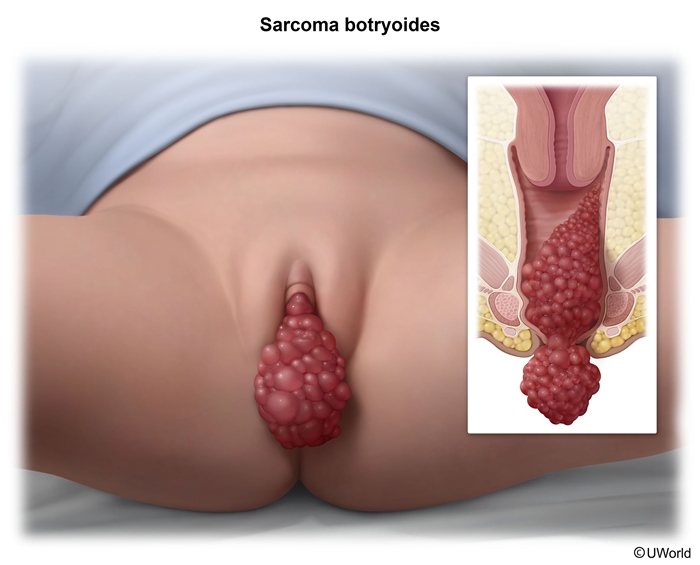Sarcoma Botryoides
Article Sections
Introduction
Sarcoma botryoides (Figure 1), an embryonal rhabdomyosarcoma, is a rare and aggressive subtype of rhabdomyosarcoma. It predominantly affects infants and is characterized by a mass with a distinctive grape-like (botryoid) appearance that arises from the genitourinary tract (eg, bladder, vagina).
Pathophysiology and pathology
Sarcoma botryoides originates from embryonal mesenchymal cells, which are precursor cells that can differentiate into skeletal muscle. The tumor cells exhibit various stages of muscle differentiation (eg, rhabdomyoblasts).
The hallmark of sarcoma botryoides is its polypoid or grape-like appearance, which is typically seen protruding into a hollow organ (eg, vagina). Microscopically, the tumor is composed of small, round, undifferentiated cells with eosinophilic-appearing cytoplasm (which occurs due to poorly formed myofilaments). The presence of a cambium layer, a dense layer of rhabdomyoblasts beneath the epithelium, is a characteristic feature.
Continue Learning with UWorld
Get the full Sarcoma Botryoides article plus rich visuals, real-world cases, and in-depth insights from medical experts, all available through the UWorld Medical Library.
Figures
